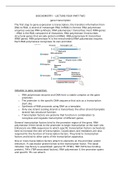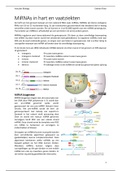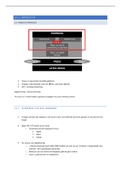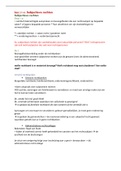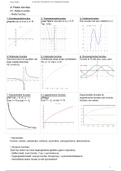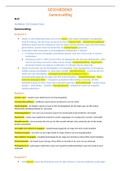BIOCHEMISTRY – LECTURE FOUR PART TWO
gene transcription
The first step to gene expression is transcription, this transfers information from
DNA to RNA. A strand of messenger RNA (mRNA) is formed. RNA polymerase
enzymes oversee RNA synthesis. RNA polymerase I transcribes most rRNA genes
– rRNA is the RNA component of ribosomes. RNA polymerase II transcribes
structural genes that encode protein (mRNA). RNA polymerase III transcribes
tRNA genes. RNA polymerase IV is the mitochondrial RNA polymerase enzyme.
Each RNA polymerase recognises its own promoter.
Initiation is gene recognition:
o RNA polymerase enzyme and DNA form a stable complex at the gene
promoter.
o The promoter is the specific DNA sequence that acts as a transcription
start site.
o Synthesis of RNA proceeds using DNA as a template.
o Only one strand (coding strand) is transcribed, the other strand (template
strand) has structural function.
o Transcription factors are proteins that function in combination to
recognise and regulate transcription of different genes.
General transcription factors bind to the promoter region of the gene. RNA
polymerase II then binds to the promoter to begin transcription at the start site.
Enhancers are DNA sequences to which specific transcription factors (activators)
bind to increase the rate of transcription. Coactivators and mediators are also
required for the function of transcription factors. They bind to transcription
factors and bind to other parts of the transcription apparatus.
One or more transcription factors attach to elements on the promoter and/or
enhancer. A coactivator protein binds to the transcription factor. The basal
initiation machinery is assembled: general TF (TFIID), TBP (TATA box binding
protein), TAFs (TBP-associated factors), RNA polymerase II, the promoter opens
and specific TFs can attach.
gene transcription
The first step to gene expression is transcription, this transfers information from
DNA to RNA. A strand of messenger RNA (mRNA) is formed. RNA polymerase
enzymes oversee RNA synthesis. RNA polymerase I transcribes most rRNA genes
– rRNA is the RNA component of ribosomes. RNA polymerase II transcribes
structural genes that encode protein (mRNA). RNA polymerase III transcribes
tRNA genes. RNA polymerase IV is the mitochondrial RNA polymerase enzyme.
Each RNA polymerase recognises its own promoter.
Initiation is gene recognition:
o RNA polymerase enzyme and DNA form a stable complex at the gene
promoter.
o The promoter is the specific DNA sequence that acts as a transcription
start site.
o Synthesis of RNA proceeds using DNA as a template.
o Only one strand (coding strand) is transcribed, the other strand (template
strand) has structural function.
o Transcription factors are proteins that function in combination to
recognise and regulate transcription of different genes.
General transcription factors bind to the promoter region of the gene. RNA
polymerase II then binds to the promoter to begin transcription at the start site.
Enhancers are DNA sequences to which specific transcription factors (activators)
bind to increase the rate of transcription. Coactivators and mediators are also
required for the function of transcription factors. They bind to transcription
factors and bind to other parts of the transcription apparatus.
One or more transcription factors attach to elements on the promoter and/or
enhancer. A coactivator protein binds to the transcription factor. The basal
initiation machinery is assembled: general TF (TFIID), TBP (TATA box binding
protein), TAFs (TBP-associated factors), RNA polymerase II, the promoter opens
and specific TFs can attach.

